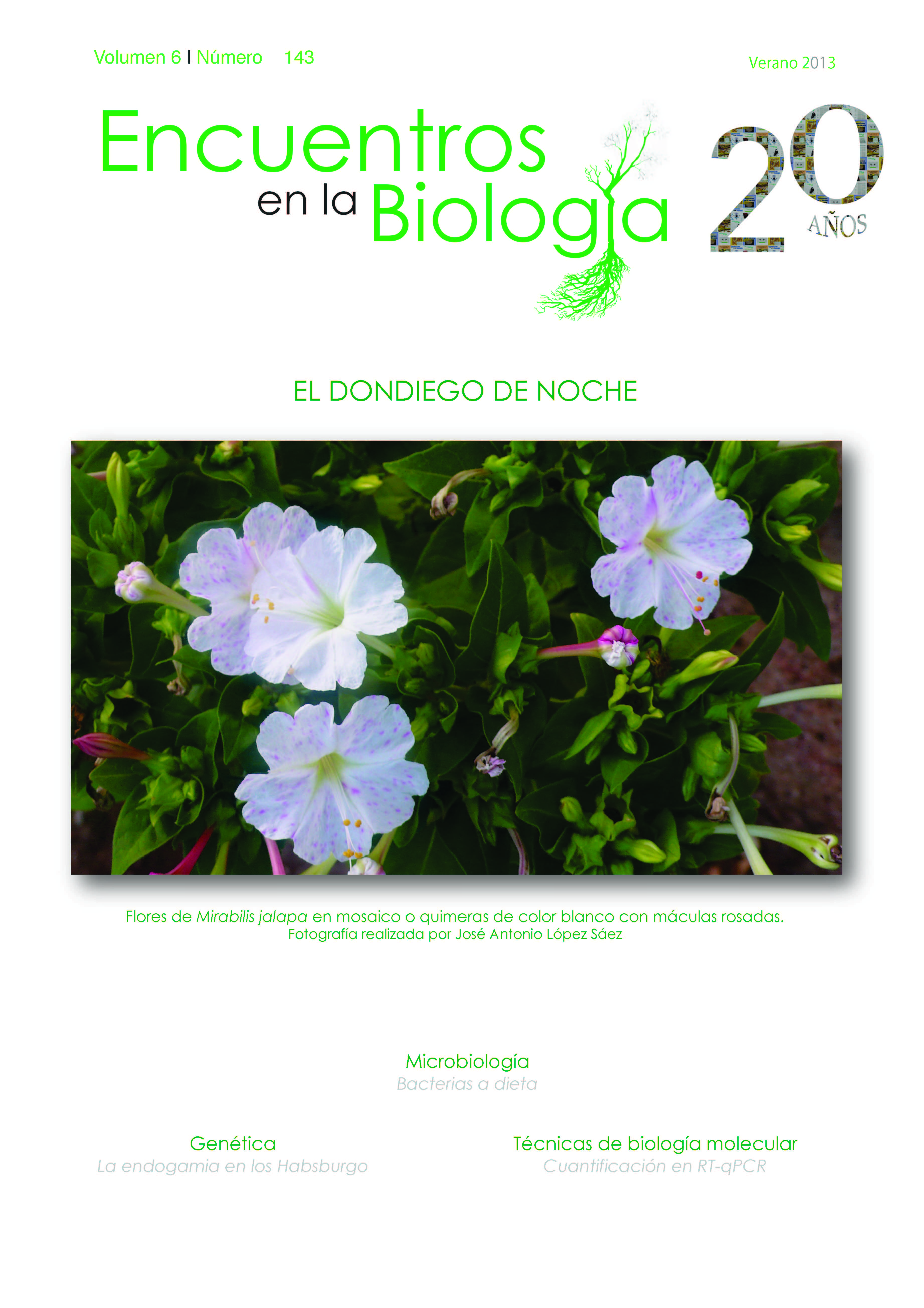The genetics of ‘color’ in the flowers of the four o’clock flower (Mirabilis jalapa L.)
Keywords:
genetics, colour, flowersAbstract
The color in flowers is due to the existence of certain pigments genetically determined by inheritance, although this has been evolving, by natural selection, to adapt to the preferences of their pollinators. Floral color, since the pioneering work of Gregor Mendel in the second half of the 19th century, has a very evident coevolutionary interest between plants and their pollination vectors; to which is added today the derivative of trade in florists of increasingly beautiful and colorful flowers.
Downloads
Metrics
References
Correns C. Ueber Bastardierungsversuche mit Mirabilis-Sippen. Ber Deutsch Bot Ges 20: 594-608, 1902.
Marryat DCE. Hybridization experiments with Mirabilis jalapa. Reports to the Evolution Committee of the Royal Society of London 5: 32-50, 1909.
Kiernan FP, White OE. Inheritance in four o’clocks. J Hered 17: 383-386, 1926.
Showalte HM. Self flower-color inheritance and mutation in Mirabilis jalapa L. Genetics 19: 568-580, 1934.
Engels JMM, Van Kester WNM, Spitters CJT, Vosselman L, Zeven AC. Investigations of the inheritance of flower va- riegation in Mirabilis jalapa L. 1. General introduction and 2. Inheritance of colour in uniformly coloures flowers. Euphytica 25: 1-5, 1975.
Piatelli M, Minale L, Nicolaus RA. Pigments of Centrospermae V. Betaxanthins from Mirabilis jalapa L. Phytochemis- try 4: 817-823, 1965.
Van Kester WNM, Spitters CJT, Vosselman L, Engels JMM, Zeven AC. Investigations of the inheritance of flower va- riegation in Mirabilis jalapa L. 3. Somatic chromosome number, 4. Distribution of the pigments and 5. Chromato- graphic studies. Euphytica 24: 6-12, 1975.
Spitters CJT, Vosselman L, Engels JMM, Van Kester WNM, Zeven AC. Investigations of the inheritance of flower va- riegation in Mirabilis jalapa L. 6. Genetic systme of flower variegation and speculation about its existence. Euphyti- ca 24: 323-332, 1975.
Gandía-Herrero F, Escribano J, García Carmona F. Betaxanthins as pigments rersponsible for visible fluorescence in
flowers. Planta 222: 586-593, 2005.
Martínez del Río C, Búrquez A. Nectar production and temperature dependent pollination in Mirabilis jalapa L. Biotropica 18: 28-31, 1986.
Levin RA, Raguso RA, McDane LA. Fragance chemistry and pollinator affi nities in Nyctaginaceae. Phytochemistry 58: 429-440, 2001.
Downloads
Published
How to Cite
Issue
Section
License
Esta obra está bajo licencia internacional Creative Commons Reconocimiento-NoComercial-CompartirIgual 4.0.
Esta revista provee acceso libre inmediato a su contenido bajo el principio de hacer disponible gratuitamente la investigación al público. Todos los contenidos publicados en Encuentros en la Bilogía están sujetos a la licencia Creative Commons Reconocimento-NoComercia-Compartirigual 4.0 cuyo texto completo puede consultar en <http://creativecommons.org/licenses/by-nc-sa/4.0>
Se pueden copiar, usar, difundir, transmitir y exponer públicamente, siempre que:
Se cite la autoría y la fuente original de su publicación (revista, editorial y URL de la obra).
No se usen para fines comerciales.
Se mencione la existencia y especificaciones de esta licencia de uso
Los derechos de autor son de dos clases: morales y patrimoniales. Los derechos morales son prerrogativas perpetuas, irrenunciables, intransferibles, inalienables, inembargables e imprescriptibles. De acuerdo con la legislación de derechos de autor, Encuentros en la Biología reconoce y respeta el derecho moral de los autores/as, así como la titularidad del derecho patrimonial, el cual será cedido a la Universidad de Málaga para su difusión en acceso abierto. Los derechos patrimoniales, se refieren a los beneficios que se obtienen por el uso o divulgación de las obras. Encuentros en la Biología se publica en open access y queda autorizada en exclusiva para realizar o autorizar por cualquier medio el uso, distribución, divulgación, reproducción, adaptación, traducción o transformación de la obra.
Es responsabilidad de los autores/as obtener los permisos necesarios de las imágenes que están sujetas a derechos de autor.
Los autores/as cuyas contribuciones sean aceptadas para su publicación en esta revista conservarán el derecho no exclusivo de utilizar sus contribuciones con fines académicos, de investigación y educativos, incluyendo el auto-archivo o depósito en repositorios de acceso abierto de cualquier tipo.
La edición electrónica de esta revista esta editada por la Editorial de la Universidad de Málaga (UmaEditorial), siendo necesario citar la procedencia en cualquier reproducción parcial o total.

